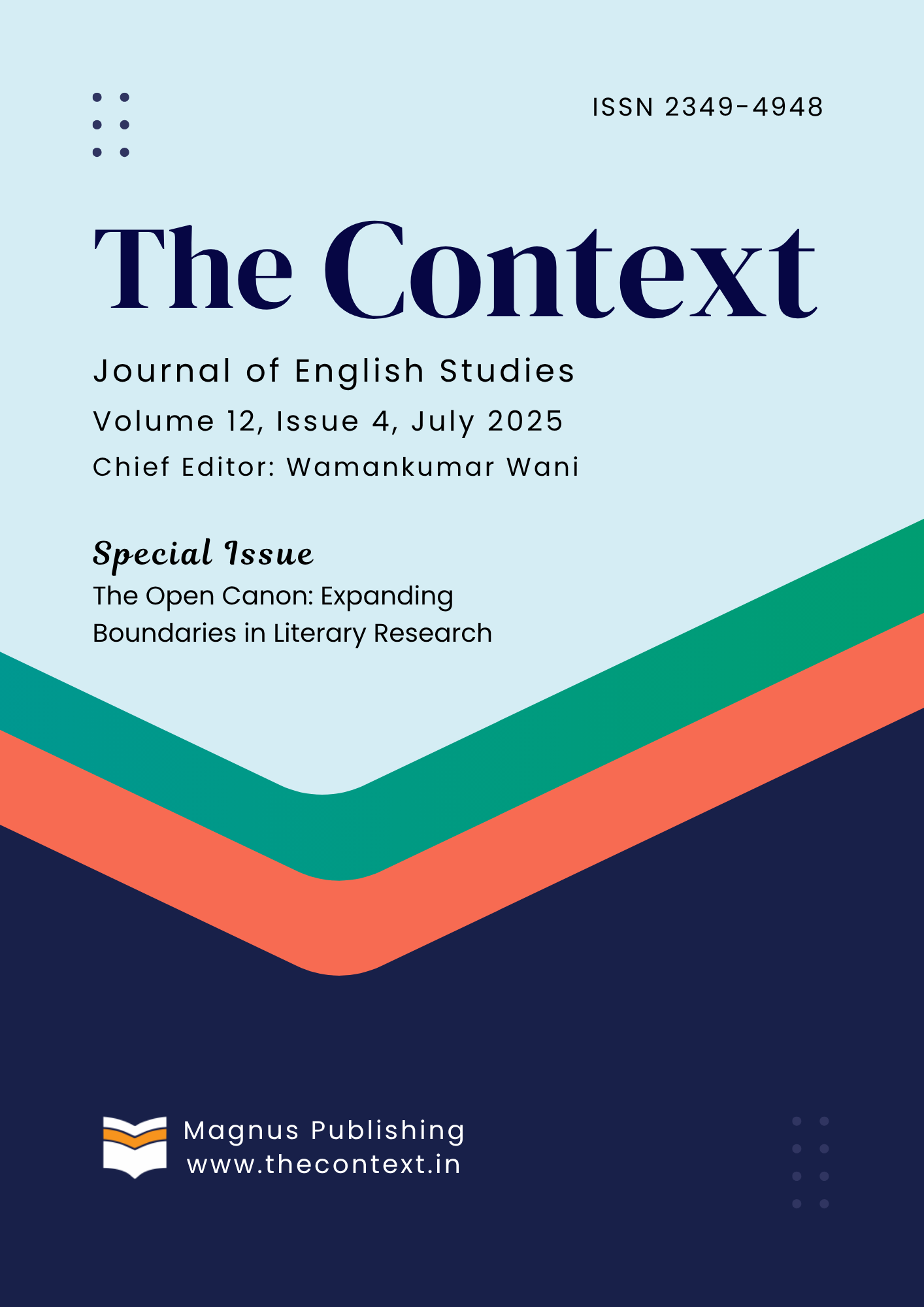Canon Mobility: A Study on Vijayan’s Khasakinte Ithihasam and The Legends of Khasak
https://doi.org/10.5281/zenodo.15807683
Keywords:
Minor transnationalism, Thick translation, Cultural Untranslatability, CanonizationAbstract
The cultural adaptation and philosophical maturity were visible in the translated work, The Legends of Khasak, primarily written in Malayalam, can be seen as distinct from its source text. This paper examines the significant philosophical and cultural shifts employed by O. V. Vijayan in revisiting his work, Khasakinte Ithihasam, twenty-five years after its initial publication. The focus of this paper is to examine how Vijayan adapted local myths, rituals, and social structures for a global audience. This paper is structured into three sections. Firstly, it begins with a brief overview of the literary and journalistic career of O.V. Vijayan, analyzing how his first novel, Khasakinte Ithihasam (1969), marked the transition from the Romantic to the Modern periods in Malayalam literature. This section also provides an idea of Vijayan’s place among the twentieth-century Malayalam writers. Secondly, the adaptation of local folklore, deities, and legends from the region for an English audience is examined. Key elements, such as idiomatic expressions, cultural references, and the portrayal of landscape, are examined to understand the balance between cultural fidelity and necessary adaptation. Thirdly, the paper analyzes the philosophical maturity and its paradigmatic shift from the Malayalam version to English by quoting specific instances from both texts. Special attention is given to how the novel’s philosophical explorations, which reflect on the nature of existence, suffering, and enlightenment, are conveyed in translation. The paper concludes with a discussion on the reception of the translated work across cultures and the impact of translation on the global understanding of Khasak’s cultural and philosophical heritage.
Downloads
Downloads
Published
How to Cite
Issue
Section
License
Copyright (c) 2025 The Context

This work is licensed under a Creative Commons Attribution 4.0 International License.






